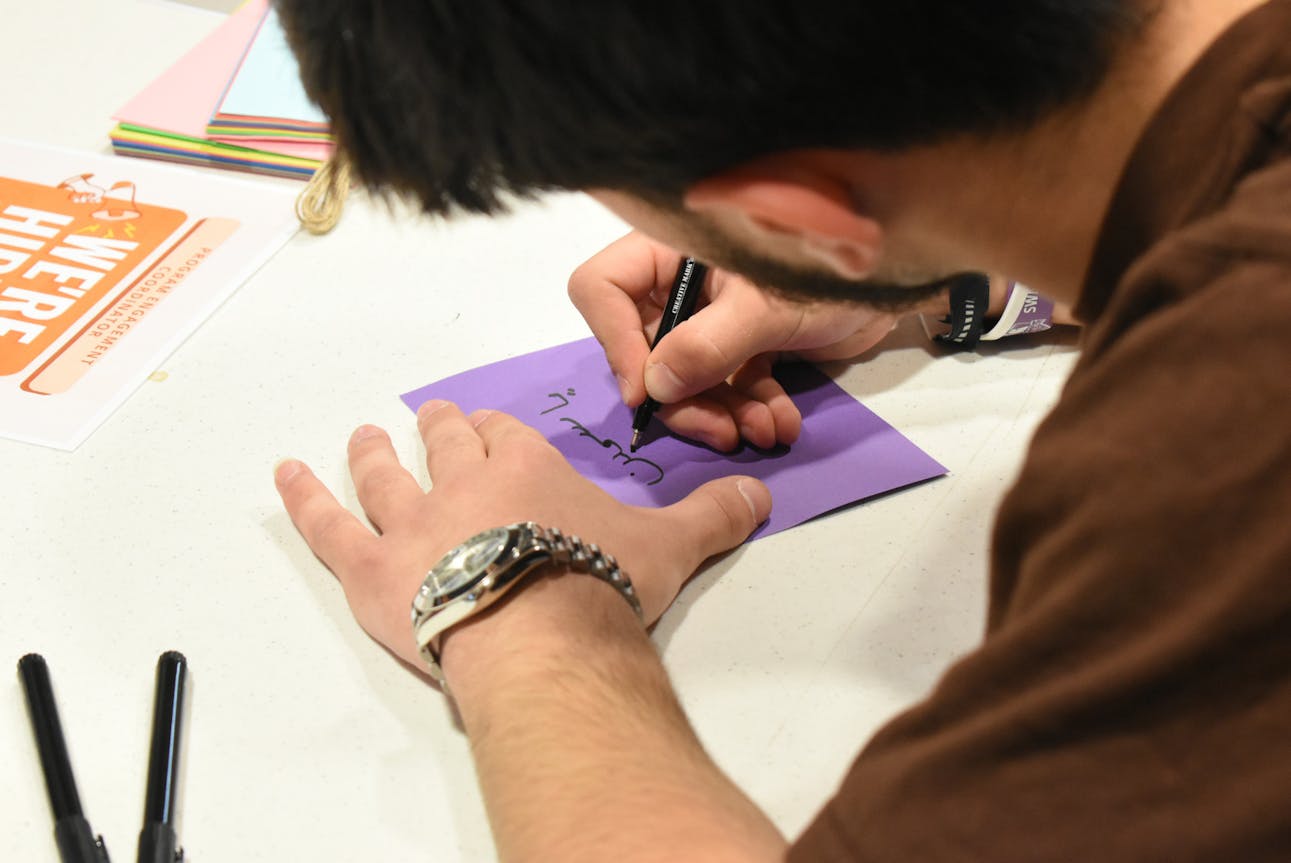Diving into the history of the Arabic language

Central Michigan University freshman Hisham Danoun writes students' names in Arabic during Celebrating Arabic Calligraphy night in the Bovee University Center room 108, Monday, April 28, 2025. "I felt by being here and having this event was my chance to finally shine and get people to know more about my culture," Danoun said.
Syrian student Hisham Danoun sat in front of a line of students wrapped around the Center for Student Inclusion and Diversity so he could write students' names in Arabic.
In honor of Arab American Heritage month, Danoun spoke on the history of the Arabic language on Monday, April 28.
Danoun has lived in the United States for the past two years. In his presentation, Danoun said he wanted to talk about his culture by discussing the history of the Arabic language. Although Multicultural Academic Student Services hosted the event, Danoun said he came up with the topic on his own.
“I saw that MASS has a passion for sharing different cultures,” he said. “I thought that I had a cool experience that I could share.”
Within his presentation, he discussed several different eras that helped form modern Arabic. Some key points of the language's history he discussed where:
- What Arabic looked like before Islam
- Arabic when Islam started spreading throughout the Middle East
- The “Golden Age” of Arabic
- Modern Arabic

Central Michigan University freshman Hisham Danoun writes another student's name in Arabic during Celebrating Arabic Calligraphy night in the Bovee University Center room 108, Monday, April 28, 2025. Danoun offered to write everyone's name in Arabic at the end of his presentation. (CM-Life | Zoey Morse)
“The Arabic I speak right now is not the Arabic (people from long ago)speak,” Danoun said.
Dating back to the seventh century, he said several different tribes around the Arabian Peninsula spoke different languages with different dialects. As Islam spread, Danoun said the Quran, or the religious text used in Islam, unified many of the tribes.
“(The Quran) unified the Middle East with all the different cultures together, (that) created a similar dialect for all,” he said.
As time progressed, a new “Golden Age” for the Arabic language began, which was a time when Arabic was used as a language for science and poetry, Danoun said. Arabic became what Danoun referred to as “the language of science.”
Danoun said many idioms and phrases came from ancient poetry. As an example of the phrase “we buried him together," comes from an ancient story that has become a common phrase that now refers to a person who starts believing their own lies, or has helped create a lie, and is just as guilty as their partner, he said.
As time progressed, Arabic-speaking regions started to develop their own dialects and accents. Danoun said like English, the way people speak Arabic is different based on the region they are from. As an example, he said ways of greeting someone will differ.
“We have way different accents than each other,” Danoun said.
Along with his presentation, beads and string were provided so students could make bracelets of their name spelled in Arabic. Students formed lines across the Center for Inclusion and Diversity to have their names written in Arabic by Danoun and to make their own bracelets.
Many students were interested in learning more about Arabic culture, such as CMU senior Waymond Beavers.
“I came from a high school that was really diverse, (but) we didn’t really learn (about Arabic) that much,” Beavers said. “The general idea made me excited.”
Samayia Boyd was another student who was interested in learning more about the language. Through the presentation, she said she learned a lot about the language that she didn’t already know, including how slang differs between countries.
“I feel like the Arabic language is cool,” Boyd said. “I realize that other languages (use slang), but I don’t really think about it.”
Danoun said through his presentation, he wanted to show that there is a wide variety of cultures within Arabic-speaking regions, which is something he believes is not often shown.
“There’s these misconceptions that there’s only one group,” Danoun said. “There’s all different cultures, all different types of people.”



